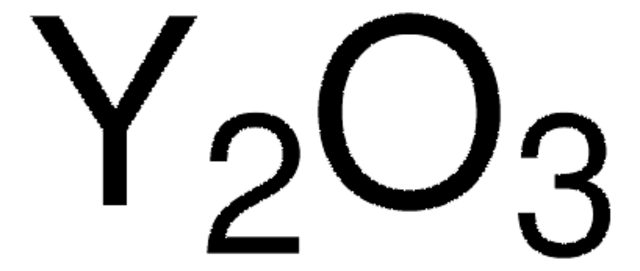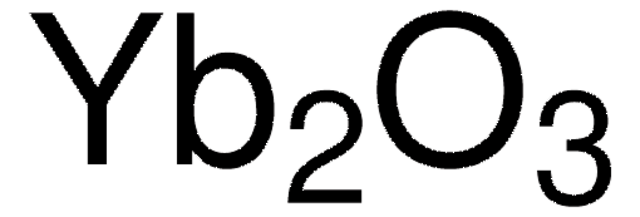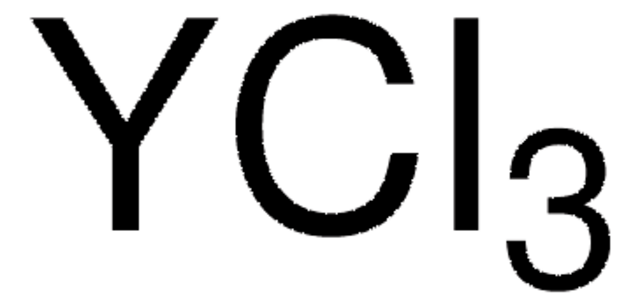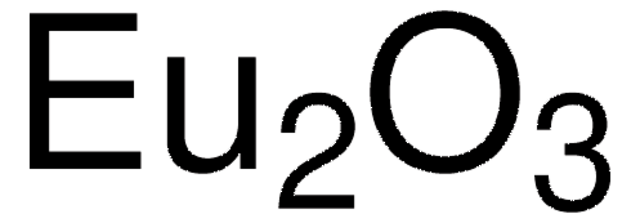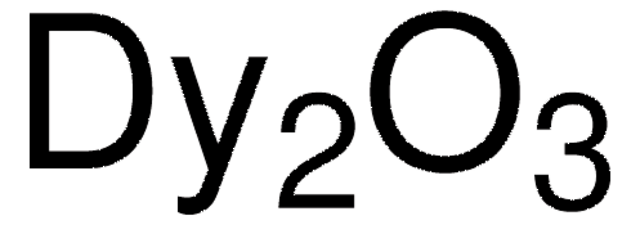544892
Yttrium(III) oxide
nanopowder, <50 nm particle size
Sinónimos:
Yttria
About This Item
Productos recomendados
form
nanopowder
Quality Level
greener alternative product characteristics
Design for Energy Efficiency
Learn more about the Principles of Green Chemistry.
sustainability
Greener Alternative Product
surface area
30-50 m2/g
particle size
<50 nm
mp
2410 °C (lit.)
density
5.01 g/mL at 25 °C (lit.)
greener alternative category
SMILES string
O=[Y]O[Y]=O
InChI
1S/3O.2Y
InChI key
SIWVEOZUMHYXCS-UHFFFAOYSA-N
¿Está buscando productos similares? Visita Guía de comparación de productos
General description
Application
- Preparation and characterization of yttrium oxide nanoparticles at different calcination temperatures: This study examines the preparation methods and characteristics of yttrium oxide nanoparticles, highlighting their thermal stability and potential applications in various fields (AJ Abdulghani, WM Al-Ogedy, 2015).
- Water assisted atomic layer deposition of yttrium oxide: Describes the development and analysis of yttrium oxide thin films, essential for enhancing the performance of electronic and optical devices (L Mai, N Boysen, E Subaşı, T de Los Arcos, D Rogalla, 2018).
- Modification of stability properties of yttrium (III) oxide particles: Focuses on the stabilization of yttrium oxide particles for enhanced performance in environmental and technological applications (M Wiśniewska, K Herda, T Urban, P Nowicki, 2024).
- Gamma ray induced thermoluminescence studies of yttrium (III) oxide nanopowders: Investigates the thermoluminescent properties of yttrium oxide doped with gadolinium, relevant for radiation detection and dosimetry (RK Tamrakar, K Upadhyay, DP Bisen, 2014).
- Yttrium oxide nanoparticle synthesis: Provides an overview of the methods for synthesizing yttrium oxide nanoparticles and their biomedical applications, highlighting the material′s versatility and potential for future innovations (G Rajakumar, L Mao, T Bao, W Wen, S Wang, 2021).
Storage Class
13 - Non Combustible Solids
wgk_germany
WGK 1
flash_point_f
Not applicable
flash_point_c
Not applicable
ppe
dust mask type N95 (US), Eyeshields, Gloves
Elija entre una de las versiones más recientes:
¿Ya tiene este producto?
Encuentre la documentación para los productos que ha comprado recientemente en la Biblioteca de documentos.
Los clientes también vieron
Artículos
The union of distinct scientific disciplines is revealing the leading edge of Nanotechnology.
Advanced Inorganic Materials for Solid State Lighting
Magnetic materials permeate numerous daily activities in our lives. They are essential components of a diversity of products including hard drives that reliably store information on our computers, decorative magnets that keep the shopping list attached to the refrigerator door, electric bicycles that speed our commute to work, as well as wind turbines for conversion of wind energy to electrical power.
Nuestro equipo de científicos tiene experiencia en todas las áreas de investigación: Ciencias de la vida, Ciencia de los materiales, Síntesis química, Cromatografía, Analítica y muchas otras.
Póngase en contacto con el Servicio técnico